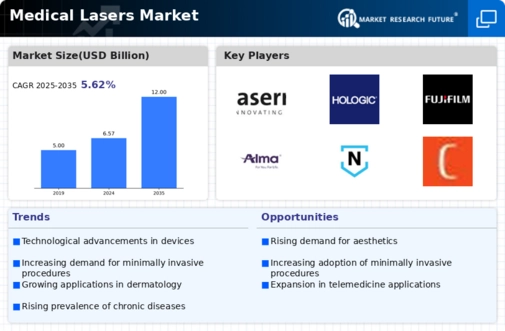Market Analysis
In-depth Analysis of Medical Lasers Market Industry Landscape
In developing countries, there is a growing focus on improving healthcare infrastructure, including dental care facilities. This has led to increased investments in dental clinics and hospitals, creating a larger market for dental consumables. Additionally, rising disposable incomes and changing lifestyles have made dental aesthetics and cosmetic procedures more popular, further driving the demand for dental consumables. The dental consumables market is highly competitive, with several key players operating globally. These companies invest in research and development to introduce new and innovative products to meet the evolving needs of dental professionals and patients. They also focus on strategic collaborations and partnerships to expand their market presence and customer base. The rise in the aging population presents both challenges and opportunities for the dental industry. Dental professionals will need to adapt to the specific needs and concerns of elderly patients. They may need to provide specialized care, such as geriatric dentistry, which focuses on addressing the unique dental issues faced by older individuals. Furthermore, advancements in dental technology have made dental procedures more efficient and comfortable. Digital imaging, computer-assisted design and manufacturing, and laser dentistry are some of the innovations that have improved the accuracy and effectiveness of dental treatments. These technological advancements contribute to better outcomes for older patients and enhance the overall dental experience.\ In conclusion, the dental consumables industry is poised for significant growth in the coming years. The increasing global population and the importance of oral health will drive the demand for dental treatments and procedures. Advancements in dental technology, especially in developing countries, will create new opportunities in the market. It is essential for dental clinicians to have access to a steady supply of high-quality dental consumables to meet the oral health needs of patients worldwide. With continued investments in research and development, the dental consumables market will continue to expand, benefiting both dental professionals and patients.













Leave a Comment